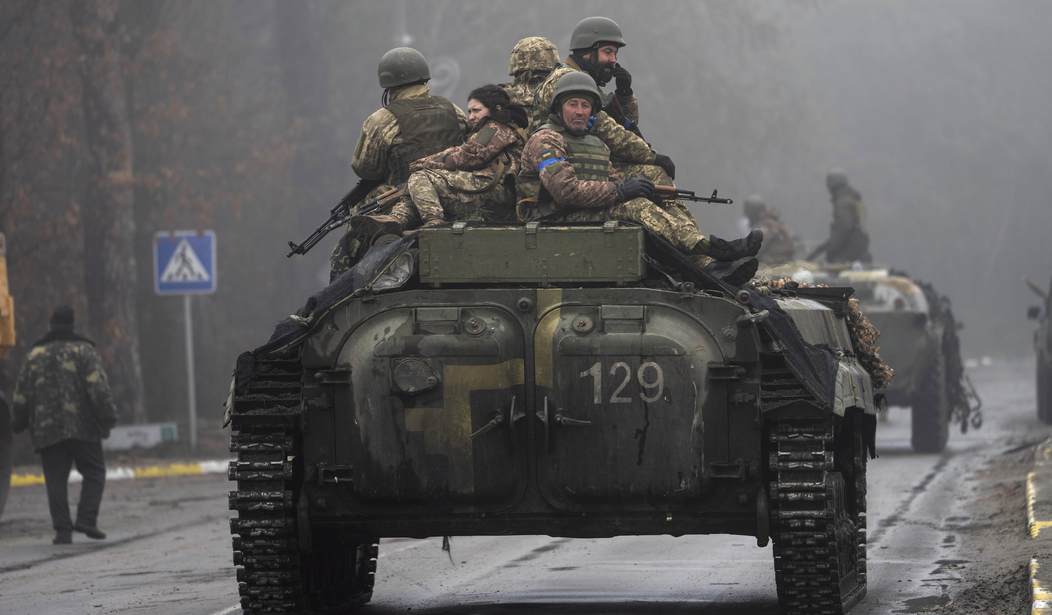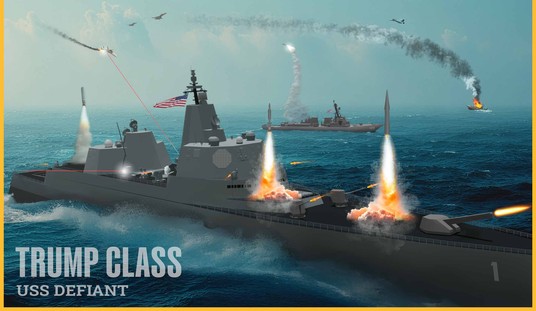That headline feels shocking but it should be obvious if you’ve followed news about the Ukraine. Russia’s advantages in this war are its traditional advantages in any war, overwhelming firepower and sheer ruthlessness. But they have a terrible inflexible command structure, their tactics and weapons are outdated, they’ve struggled with logistics, they’ve lost a ton of men, and they’re coping with poor morale after what was supposed to be a three-day war has dragged on for six months and left them playing defense in the south.
The Ukrainians have western weapons and tactics, are more flexible in the field, have the home-field advantage in knowing the terrain, and are fighting for national survival. They’re still outnumbered, presumably, but the Russian troops they’re facing now are increasingly poorly trained reinforcements thrown into hastily reconstituted units. “Parity” seems plausible.
Although it also seems like a recipe for near-term stalemate, no?
Still, there is a distinct feeling amongst Ukraine’s US and western advisers that the Ukrainian military is on much more even footing with Russia than was believed even just a few short months ago, multiple officials told CNN. Russia still maintains superior numbers in overall manpower and massed artillery…
“It shows you what the sustained training and weapons provision can do when the force is highly motivated and capable in its employment,” a senior NATO official told CNN.
Another US military source put it more bluntly: Ukraine has made up for Russia’s advantage in sheer volume of fire with its “competence.”…
Officials say that Ukraine now appears more evenly matched with Russian forces not only because of the advanced western weaponry that Ukraine has been using effectively, but also because the Ukrainians still have the advantage in terms of morale, unit cohesion, tactical acumen, and a superior ability to improvise on the fly.
When Ukraine first started rolling out U.S. HIMARS systems this summer, experts cautioned observers not to get too excited. There’s no such thing as a “wonder weapon” that can instantly turn the tide of conventional warfare, they said, which was true. But it also seems to be true that HIMARS really was a gamechanger in how it singlehandedly accelerated the parity between the two sides. Because the Ukrainians can now order precision strikes on Russian supply routes from long range, they’ve been able to cut the major arteries into and out of Kherson. The new counteroffensive in the south is only realistically winnable because the Russians will now struggle to get food, fuel, and weapons to their forces there as stockpiles eventually run down. HIMARS made that possible.
Just in: Pentagon spox Gen. Ryder confirms Ukraine is having some success in its operations in Kherson, noting that Ukrainian forces have "made some forward movement" and "in some cases" Russian units are falling back. Background: https://t.co/syDsu3ctNB
— Lara Seligman (@laraseligman) August 31, 2022
One local official claimed that Ukrainian forces are advancing in three different areas of Kherson province but details are hard to come by. Analysts are doing their best to game out what the front might look like right now:
With OpSec, it is extremely difficult to accurately map the Russian frontlines around Kherson. Based on geolocations, pro-Russian sources and generally reliable reporting, this map shows my best (UNCONFIRMED) understanding of the situation.
Don't count on this being right. pic.twitter.com/ZtgscVoLgI
— Nathan Ruser (@Nrg8000) August 31, 2022
Casualties are unknown but one businessman in Odessa told Al Jazeera he’s heard rumors of gruesome numbers: “The villages along the front line – these the Ukrainians broke easily. In the second line of defense there was blood spilled. I heard 1,000 Ukrainians and 1,500 Russians [were killed].” The operation is only three days old.
And it won’t end soon. Experts are cautioning the media not to expect some lightning advance by the Ukrainians through the province, which is the size of Maryland. “Parity” means parity, after all. Unless the Russian army breaks under pressure and disintegrates, this will be a slog. And it’ll only get sloggier as the weather turns less forgiving.
Ukrainian military expert Mykhaylo Zhyrokhov told the BBC: “We shouldn’t be expecting a cavalry attack, because the general staff of Ukraine’s armed forces doesn’t want street fighting [in the Kherson city] – that would result in heavy casualties.”
“The Ukrainian strategy is to squeeze the enemy out,” he said, warning that this “won’t happen quickly”.
“It’s like a situation with a cornered rat that needs to be offered a way out. Ukraine’s military should aim to provide the Russian troops with such a withdrawal route, otherwise [the Russians troops] would be fighting until the last soldier.”
“The Ukrainian counteroffensive is thus a cohesive process that will require some time to correctly execute,” the Institute for the Study of War warned yesterday, speculating that the Ukrainians will remain focused on severing Russian logistics and communications. “The Kremlin will likely exploit the lack of immediate victory over Kherson City or Ukrainian operational silence on the progress of the Ukrainian counteroffensive to misrepresent Ukrainian efforts as failing and to undermine public confidence in its prospects.” Likewise, a U.S. military source warned CNN that the Ukrainian advance might not involve a large continuous line of units but rather “a smaller number of forces” probing the Russian lines opportunistically for weak spots.
They seem to be doing okay in some areas:
An unfamiliar smell of defeatism emanating from Russian militant channels. pic.twitter.com/bX7rpXCW4F
— Christo Grozev (@christogrozev) August 31, 2022
CNN claims that the Ukrainians initially wanted to go big with the counteroffensive, targeting not just the southern region of Kherson but other areas under Russian occupation. The Pentagon told them to calm down and not get overextended or the whole war could go sideways. After the two parties wargamed a plan together, the Ukrainians opted to focus on the south. Which makes sense: It’s more important economically because of its access to the Black Sea, and diverting some Ukrainian units elsewhere in the country to fight in Kherson might not be so risky at this stage of the war. The Russians could be too ground down to advance meaningfully anywhere, even in parts of Ukraine that are suddenly less heavily defended than they were a few months ago.
I’ll leave you with this. There are no subtitles, but you don’t need them to get the vibe.
The look on Putin’s face when Zolotov says: “We feel the support of the population in the liberated territories." pic.twitter.com/J6I0NDRvCQ
— Michael Weiss 🌻🇺🇸🇮🇪 (@michaeldweiss) August 30, 2022








Join the conversation as a VIP Member